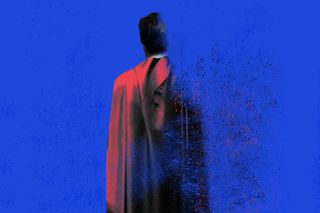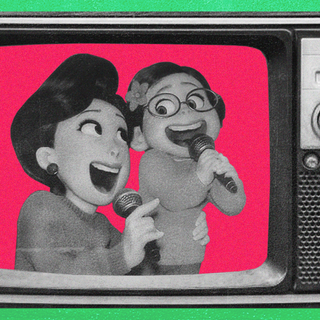
Have Superheroes Become Culturally Obsolete?
Despite greater diversity, there is a stagnation in how stories about extraordinary people are told.

In 1992, Superman died. At least, he did in the comics, leaving fans stunned and unmoored. It was akin to a 90s iteration of the “God is dead” neo-theological movement, prompting questions about our place in the world and who, if anyone, will be our salvation.
Today, we are under a deluge of superhero media that overpopulates the cultural landscape and births more heroes than those who die. In the process, they all are beginning to die a metaphorical death.
Most recently, The Batman released to much hype and fanfare as the beloved caped crusader was reprised, albeit in a much moodier, introspective form. While the news cycle has currently moved on, it is only a matter of time before a superhero crops up in the conversation again – this time perhaps as an OTT limited series.
The historical record shows that there has never been as much superhero content to consume as there is right now. But the magnitude of it hardly indicates its popularity. Despite this, production studios are increasingly churning out superhero media because they provide a tried-and-tested formula to constantly cash in on. .
The devil is not so much in the details, as it is in a certain mouse-shaped logo that has come to take over much of entertainment culture. Thanks to the monopoly of studio behemoths like Disney, Marvel (acquired by Disney), Lucasfilm (acquired by Disney), and Fox (no prizes for guessing who acquired this too), films have now acquired a factory-made quality, and the superhero genre is the most compatible for this style of production. “The whole superhero genre reeks of the problems with late-stage capitalism,” says Aishwarya, 25.
These superhero films are also struggling to adapt to changing cultural sensibilities; as a result, there are more diverse characters in the self-same contexts and settings. Calls for representation have been appropriated by the Disney machine, which promptly chewed up and spit out representation in the form of women in capes operating within the same military industrial complex. A cultural quagmire has taken hold: despite greater diversity, there is a stagnation in how stories about extraordinary people are told.
“Comic book and graphic novel adaptations are becoming an exploitation genre, and what’s being ruthlessly tapped into is our desire to have heroes to look up to,” writes Cameron Laux for BBC. Hero figures have existed in storytelling traditions for thousands of years – they’re not new and will likely never get too old for audiences. The problem with Marvel and DC adaptations, however, is that there is very little context to these stories. There is almost no narrative that speaks to the particular anxieties of the present moment; making the stage ripe for pointless pop-culture wars about representation being “historically inaccurate.”
Related on The Swaddle:
What Are The Batman’s Politics?
In other words, socio-cultural and political context has always mattered; it anchors a story’s meaning, allowing superheroes to serve as analytical tools for looking at the politics of a particular time. From their inception, superheroes have been deeply rooted to the societal contexts they were being written for. Quintessential caped figures like Batman, Superman, and Captain America were war heroes – they represented a nation’s anxieties amid ideological battle. We first see them fighting Nazis in ways that are laughably – and yet lovably – simplistic; in his very first issue, Captain America punches Hitler. Comic historians like T. Andrew Wahl locate these figures as historical motifs: take, for instance, how Captain America in the 50s became “Captain America: Commie Smasher.” Wahl explores how in the next few decades, Captain America spent time being disillusioned in the wake of the Watergate scandal, then went on to fight terrorists in the Middle East post 9/11, then got more introspective about that, too, as the war got more unpopular. And although these narratives are deeply inextricable from the state narratives of the time, they still offer a way to better understand what a society stood for, feared, and worshiped.
X-men, similarly, reflected popular sentiments about civil rights. The idea of reviled “mutants” who just want to use their abilities for the good of society, over time, became less political, more saccharine, and less creative. In other words, superheroes in their erstwhile comic book avatars were never ones to shy away from politics – whether in a subversive sense or a coercive sense, they offered ways to actively think about and engage with the zeitgeist. Now, however, they remain rooted to WW2-era questions of good versus evil (read: Magneto) without adapting to fit more contemporary humanitarian crises. What are superheroes saving, if they aren’t in the present?
Superhero media thus feels ahistorical, seeming to respond to a cultureless culture where the point is to put different people in the same costumes. As a result: “They don’t particularly speak a lot about what’s happening now. It’s always the same old concept,” says Nithin, 22.
The superheroes of today are now commodified into formulaic depictions of issues that are no longer as relevant to our context. The defining issues of our times are private players bloated with wealth, global authoritarianism, climate change – all brought into sharp focus by the pandemic, an unseen, omnipresent adversary that no individual can fix. Even when superheroes are relevant today, therefore, they tend to be on the wrong side of the cultural conversation. Amid rising frustration against staggering wealth inequality, superheroes like Iron Man represent a technocratic, individualistic solution to gaping systemic issues. It’s a bit like expecting Elon Musk to realistically solve climate change – he claims he can do it, but increasingly, nobody’s buying it. As Aishwarya puts it: “if that were realistic, it would have happened.”
Related on The Swaddle:
‘Minnal Murali’ Subverts the Superhero Genre Through the Supersuit
“The last straw is that some of the most popular superheroes are Batman and Iron Man, who are extremely wealthy,” she adds. Rather than becoming heroes, these particular figures then turn into proto-supervillains: both refuse to part with their wealth, add what one can only imagine is a massive carbon footprint to the Earth, and manufacture weapons. The lack of self-awareness or even attention paid to the context makes their heroic sentiments ring hollow. The question that remains is, if real life has lifted the veil (or cape, if you will) from figures like these and disenchanted us from them, what remains? Who is a hero in the 21st century, post-pandemic, globally warmed landscape?
“[A]s we grow, it’s easier to determine that the real threat isn’t an alien invasion or ridiculous monsters but the systems in place, the people who uphold dangerous systems,” says Shay, 25.
Earlier superhero representations in the comics, moreover, experimented with gender, sexuality, and political metaphors such that even if it is one person in a vest or a cape saving the day, that person represented the aspirations of a whole class or generation of people. The same cannot be said for filmic superheroes now: despite the more overt diversity, representation is often the end itself, rather than a vehicle for nuanced explorations of good, evil, and the shades of gray between.
It all boils down to the fact that Disney-fied superheroes masquerading as dark knights no longer apply to the present zeitgeist, no matter how much they brood or introspect. “… it is, potentially, culturally catastrophic to have the ephemera of a previous century squatting possessively on the cultural stage and refusing to allow this surely unprecedented era to develop a culture of its own, relevant and sufficient to its times,” notes Alan Moore, the graphic novelist who gave the world Watchmen.
Although, to their credit, villains are getting more complex – take Ultron’s Malthusian solution to saving the world, or Killmonger’s genocidal impulse for racial justice – they are, at the end of the day, villains. More than having us question what villainy even means, superhero films are quick to straitjacket the “ends don’t justify the means” philosophy into a status-quo affirming conclusion, brought to you by the trusty good hero who saves the day. But what day are they really saving?
The utopia that superheroes aspire to, then, is increasingly untenable. Young activists now want nothing less than complete systemic upheavals; many are aware that a few individuals cannot punch global warming into submission. Numerous global studies have also reported how it looms over people’s minds.
Factory-made superhero media is thus working against, rather than beside, the popular sentiment. The age of individuals is beginning to shift toward something else. A utopian vision of society is increasingly one that is liberated from the corporate-political-military triumvirate – one that, unfortunately, superheroes are now a part of, for better or worse. While still giving us occasionally enjoyable watches, the superhero genre may be a historical relic that isn’t yet aware that its time has come. The day remains unequal, miserable, drenched in squalor, poverty, with ripening seeds of fascism everywhere.
Rohitha Naraharisetty is a Senior Associate Editor at The Swaddle. She writes about the intersection of gender, caste, social movements, and pop culture. She can be found on Instagram at @rohitha_97 or on Twitter at @romimacaronii.
Related


‘Turning Red’ Is an Ode to Complex Mother‑Daughter Relationships
